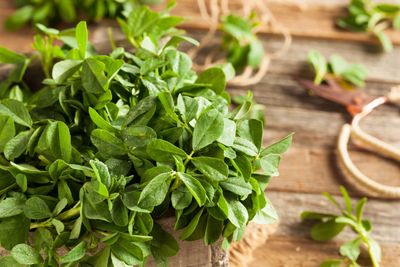What is Fenugreek?
Native to southern Europe and Asia, fenugreek (Trigonella foenum-graecum) has been cultivated for centuries as a spice and for its medicinal qualities. Herbal fenugreek is used to treat a variety of conditions, including coughs, sore throat, bronchitis, constipation, and minor skin irritations. In the kitchen, fresh fenugreek leaves are cooked like spinach and the tangy, mustard-yellow fenugreek seeds are used as a spice, often in Middle Eastern dishes. Dried or fresh fenugreek leaves are brewed into a flavorful tea.
How to Grow Fenugreek Herbs
Fenugreek plants thrive in full sunlight and cool temperatures. Fenugreek is grown in spring in warm climates, but can be grown all summer where summers are mild. Plant fenugreek seeds directly in the garden after frost danger has passed in spring, as the plants don’t tolerate transplanting. The soil should be well-drained and should be amended with compost or well-rotted manure before planting. Fenugreek is relatively drought tolerant once established, but should be watered during dry periods when first planted. Remove weeds regularly; otherwise, they compete with herbal fenugreek for moisture and nutrients. Harvest fenugreek leaves as desired throughout the summer. You can also place fresh leaves in an airtight container and store them in the freezer. Fresh leaves retain their quality for up to a month. If you’re growing fenugreek for the seeds, uproot entire plants in early to mid-fall and hang them in a cool, dry location until the seeds are dry. Remove the dry seeds from the pods and store them in an airtight container. The seeds retain their quality best when stored in a cool, dry cupboard. As you can see, fenugreek plant care is easy and makes a great addition to your herb garden.
